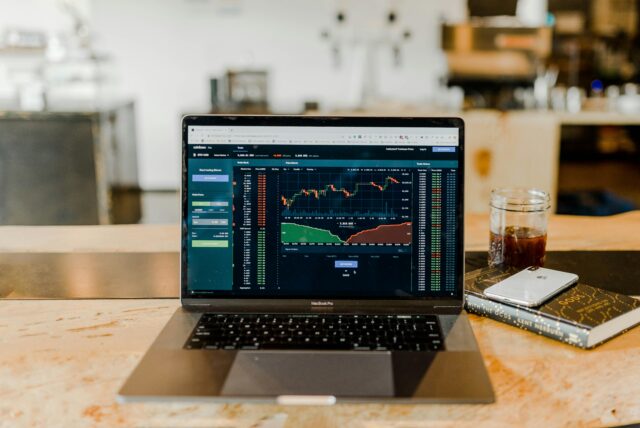What is Demand Forecasting?
Demand forecasting is a method used to anticipate future consumer demand for products or services. This process can focus on individual items or entire product categories, helping businesses gauge customer interest, make necessary adjustments, and introduce new offerings. Accurate demand forecasting involves predicting quantities and timelines, ranging from specific days to entire calendar years.
Demand forecasting often overlaps with sales or revenue forecasting when applied to specific products. However, it can also be more generalized, predicting demand for broader categories, such as the number of vehicles to be sold or manufactured in a specific year. Forecasters use various methods, which we’ll explore, to achieve accurate predictions based on historical data and underlying principles of success.
The Importance of Demand Forecasting
Enhance Supply Chain Efficiency: Demand forecasting is essential for optimizing supply chain operations. It helps businesses plan for necessary inventory levels, supplier relationships, and shipping schedules. For instance, accurate forecasts can determine if more shipments are necessary on certain days or over specific periods, thus avoiding stockouts or overstock situations.
Improve Financial Planning: By predicting sales volumes and revenue, businesses can better manage their cash flow and budgeting processes. Accurate forecasts prevent over-investment in inventory, which can tie up capital that might be better used for marketing or other growth initiatives.
Strategic Business Growth: Effective demand forecasting allows businesses to plan for expansion strategically. It helps in making informed decisions about scaling operations, entering new markets, or launching new products, ensuring that growth is sustainable and aligned with market demand.
Price Optimization: With reliable demand forecasts, businesses can adjust prices strategically. For example, anticipating high demand can justify higher prices, while expecting lower demand might necessitate discounts to stimulate sales. This approach helps in maximizing revenue and maintaining market competitiveness.
Inventory Management: Accurate demand forecasting ensures that businesses maintain optimal inventory levels, reducing the risks of stockouts or excess inventory. This balance is crucial for meeting customer demand without incurring unnecessary storage costs or dealing with obsolete products.
Demand Forecasting vs. Demand Planning
Demand forecasting and demand planning are often used interchangeably, but they represent different aspects of managing future demand. Demand forecasting is the analytical process of predicting future customer demand using historical data, market trends, and statistical methods. It focuses specifically on estimating the quantity of products or services that consumers will purchase in the future.
On the other hand, demand planning encompasses a broader scope. It is a strategic process that involves not only forecasting demand but also aligning the forecast with business objectives, resource planning, inventory management, and market strategies. Demand planning integrates various factors, such as marketing plans, sales targets, supply chain capabilities, and financial goals, to create a comprehensive plan that meets future demand effectively.
Scope and Focus
- Demand Forecasting: Concentrates on generating accurate predictions about future demand. It uses quantitative data and statistical models to estimate future sales volumes. The primary goal is to provide a reliable basis for making inventory and production decisions.
- Demand Planning: Goes beyond forecasting to include all aspects of meeting the forecasted demand. This includes coordinating with various departments (such as sales and revenue operations) to ensure that the necessary resources are in place. It also involves contingency planning for potential disruptions or changes in the market.
Time Horizon
- Demand Forecasting: Typically operates on short to medium-term horizons. Forecasts can be weekly, monthly, quarterly, or annually, depending on the industry and business needs. The focus is on providing actionable insights for immediate to near-future decision-making.
- Demand Planning: Often involves longer time horizons. It includes strategic planning for the next several years, aligning with overall business goals and market positioning. Demand planning ensures that long-term strategies are supported by adequate resources and capabilities.
Integration with Business Processes
- Demand Forecasting: Primarily an analytical task that feeds into other business processes. The output of demand forecasting is used by various departments to make informed decisions about production schedules, inventory levels, and procurement.
- Demand Planning: A collaborative process that requires input and coordination from multiple departments. It involves aligning the forecast with marketing initiatives, sales strategies, and supply chain plans. Effective demand planning ensures that all parts of the organization work together to meet future demand efficiently.
Flexibility and Adaptability
- Demand Forecasting: While it provides valuable insights, forecasting can sometimes be rigid, relying heavily on historical data and established models. It may not always account for sudden market changes or unforeseen events.
- Demand Planning: More adaptable and flexible. It incorporates real-time data, market intelligence, and feedback from various stakeholders. Demand planning can quickly adjust to changes in the market, new product launches, or shifts in consumer behavior, ensuring that the business remains responsive and agile.
Impact on Business Outcomes
- Demand Forecasting: Directly impacts inventory management, production planning, and supply chain efficiency. Accurate forecasts help in reducing stockouts and excess inventory, leading to cost savings and improved customer satisfaction.
- Demand Planning: Has a broader impact on overall business performance. By aligning demand forecasts with strategic goals, demand planning helps in achieving sales targets, optimizing resource allocation, and enhancing market responsiveness. It plays a crucial role in driving business growth and profitability.
Factors Influencing Demand Forecasting
Economic Indicators: Macroeconomic factors, such as inflation rates, unemployment levels, and GDP growth, significantly impact consumer spending and demand. Businesses must consider these indicators to adjust their forecasts accordingly.
Seasonality: Many products experience seasonal demand fluctuations. Understanding these patterns helps businesses plan for peak periods and adjust inventory and staffing levels to meet changing consumer needs.
Market Competition: The presence and actions of competitors can directly affect demand for your products. Keeping an eye on competitor activities, such as new product launches or pricing changes, is crucial for accurate forecasting.
Consumer Behavior Trends: Shifts in consumer preferences and behavior, driven by cultural trends, technology, and lifestyle changes, can significantly impact demand. Businesses must stay attuned to these trends to anticipate changes in consumer demand.
Product Lifecycle: The stage of a product’s lifecycle (introduction, growth, maturity, or decline) affects its demand. Accurate forecasting must account for these stages to predict sales volumes accurately.
Promotional Activities: Marketing campaigns, discounts, and other promotional activities can temporarily boost demand. Incorporating these factors into demand forecasts ensures that businesses can capitalize on increased interest without overcommitting resources.
Common Demand Forecasting Methods
Proactive Demand Forecasting: Proactive demand forecasting involves predicting future demand based on forward-looking metrics such as planned marketing campaigns, product launches, and industry trends. This method uses a combination of historical data and predictive analytics to anticipate changes before they happen. It is particularly useful in dynamic markets where consumer preferences shift rapidly. For example, a manufacturing company might use proactive forecasting to predict demand for a new line of vehicles based on emerging market trends and planned promotional campaigns.
Reactive Demand Forecasting: Reactive demand forecasting relies heavily on historical data to predict future demand, making it a more conservative approach. This method assumes that future demand will closely mirror past trends and patterns. While it may not account for sudden market changes, it is useful in stable industries with consistent demand patterns. For instance, a manufacturer of cleaning products might use reactive forecasting to predict steady demand based on previous sales data.
Segmented Demand Forecasting: Segmented demand forecasting breaks down the overall demand into smaller, more specific segments. This method considers the unique characteristics and behavior of different customer groups or product categories. By doing so, businesses can create more accurate and tailored forecasts for each segment. For example, an electronics retailer might segment demand forecasts by product type (e.g., smartphones, laptops, accessories) to better manage inventory and marketing strategies for each category.
Global Demand Forecasting: Global demand forecasting takes a broader approach, considering macroeconomic factors, international market trends, and geopolitical events that could impact demand on a large scale. This method is particularly relevant for businesses operating in multiple countries or regions. It helps identify global trends and potential disruptions that could affect demand across different markets. For instance, an automobile manufacturer with a global presence might use this method to forecast demand considering factors like international trade policies, currency fluctuations, and economic growth rates in various regions.
Demand Forecasting vs. Revenue Forecasting
Understanding the Concepts
While demand forecasting focuses on predicting future customer demand for products or services, revenue forecasting is about estimating the financial returns from those demands. Together, these forecasts provide a comprehensive view of future business performance, helping organizations make informed decisions
Interdependence
Demand forecasting and revenue forecasting are inherently linked. Accurate demand forecasting is crucial for precise revenue forecasting, as the expected sales volumes directly influence revenue predictions. For example, if a company anticipates high demand for a new product, it can project higher revenue from increased sales. Conversely, lower demand forecasts would lead to more conservative revenue projections.
Revenue Implications
Revenue forecasting goes beyond just predicting sales volumes; it also considers pricing strategies, cost of goods sold (COGS), and potential discounts or promotions. This holistic view helps businesses understand the financial implications of their demand forecasts. For instance, a business might forecast high demand for a product but also predict significant discounting during a sale period, impacting the overall revenue forecast.
Financial Planning and Budgeting
Revenue forecasting is essential for financial planning and budgeting. It helps businesses allocate resources effectively, plan for capital expenditures, and set financial targets. For example, an accurate revenue forecast allows a company to plan its budget for marketing campaigns, staffing, and other operational expenses, ensuring that it remains on track to achieve its financial goals.
Investment and Growth Decisions
Accurate revenue forecasting is critical for making investment and growth decisions. Businesses rely on revenue forecasts to determine the viability of new projects, expansions, or entering new markets. For instance, a company considering opening a new store location would use revenue forecasts to evaluate the potential return on investment and decide whether the expansion is financially feasible.
Stakeholder Confidence
Reliable revenue forecasting builds confidence among stakeholders, including investors, lenders, and board members. Clear and accurate revenue projections demonstrate that the business has a solid understanding of its market and financial outlook, which can attract investment and support strategic initiatives.
Integrating Demand and Revenue Forecasting with revVana in Salesforce
For businesses looking to streamline their forecasting processes, integrating demand and revenue forecasting inside of Salesforce can provide a more cohesive and accurate financial outlook. This is where revVana comes into play.
revVana Revenue Forecasting in Salesforce: revVana is a powerful tool that seamlessly integrates with Salesforce, enabling businesses to leverage their demand forecasts to create precise revenue forecasts. By using revVana, companies can automate and enhance their forecasting processes, ensuring that both demand and revenue predictions are aligned and .
Streamlined Processes: With revVana, businesses can automate the collection and analysis of data from various sources within Salesforce, reducing the manual effort and potential errors associated with traditional forecasting methods. This integration ensures that all relevant data is considered, providing a comprehensive view of future demand and revenue.
Real-Time Insights: revVana offers real-time insights into both demand and revenue forecasts, allowing businesses to make timely and informed decisions. This capability is crucial for adapting to market changes, optimizing inventory levels, and adjusting pricing strategies to maximize revenue.
Enhanced Collaboration: By integrating revVana with Salesforce, different departments within an organization can collaborate more effectively. Sales and revenue operations teams can all access the same forecasting data, ensuring that everyone is aligned and working towards common goals.
Strategic Decision-Making: With accurate demand and revenue forecasts at their fingertips, businesses can make strategic decisions with confidence. Whether it’s planning for new product launches, entering new markets, or scaling operations, revVana provides the insights needed to drive growth and profitability.
In summary, by leveraging revVana within Salesforce, companies can seamlessly integrate demand and revenue forecasting, ensuring a strategic approach to growth and financial management. This integration not only enhances the accuracy of forecasts but also supports better decision-making and overall business performance.





